It’s harebell (Campanula rotundifolia) season in the Saugatuck Dunes, which also happens to be hairy puccoon season, and red-eyed vireo season. This year’s cool, wet, sunny spring has greened and plumped leaves of all kinds, from grass to swamp cabbage, far beyond the norm. Even walking in the dunes, which do not hold onto rain very long, feels sodden. I think more harebells than usual have sprung up this year, their blossoms are more vibrantly blue-purple than usual, and they’re lasting longer. What stark sobering contrast to news of wildfires raging in the Southwest, again.
I first identified this flower in August 1982 in in the Canadian Rockies. I was using a field guide to Rocky Mountain wildflowers that seems to have gone missing* from my collection. Harebells are found throughout North America: the flowers I saw in Banff National Park look practically identical to the flowers growing in the Lake Michigan dunes. A Field Guide to Wildflowers: Northeastern/Northcentral North America, from the Peterson series, reports that hareflowers grow in “meadows, grassy places, rocky slopes, alpine areas.” The sandy edge of a trail along a forested dune ridge must provide similar habitat. In any case, I like that this common flower links a place that introduced my young self to wildness with a place that teaches me about it daily.
I pulled The History and Folklore of North American Wildflowers (Editor Timothy Coffey) from the bookcase where I keep books I use often and re-learned that in Michigan these flowers are called “heatherbells,” although I’ve never heard them called anything but bluebells, which is what they’re called in Scotland, where I’ve never been. And I like being reminded that wildflower names usually hint at stories: “It’s not clear whether it is hair bell, for the hairlike stems, hare bell, for hares romp in it, Hea’erbell, a contraction of Heather-Bell, or Ayr-bell, a corruption of the Welsh awyr-pel, a ‘balloon.'”
Pick up any old-school field guide to wildflowers (arranged by flower colors), flip through it (which allows you to scan hundreds of fairly large pictures of different wildflowers in less than a minute–very useful) and you’ll notice that blue flowers are rare, much rarer than pink, yellow, or white ones, and to my eye anyway dazzlingly beautiful against the rich and varied greens of the early summer woods. This year, so far, we’re having an especially blue and green summer. The Great Lakes region is notably cloudy, year ’round; today I’m thinking about the fact that clouds often equal rain and, this time of year, rain means green and growing.
Click here to read about another wildflower that grows in the Saugatuck Dunes.
*July 2, 2013. I found it: Rocky Mountain Wildflowers, edited by A.E. Porsild and published in 1979 by National Museum of Natural Sciences/National Museums of Canada, Ottawa. The entry on Campanula rotundiflora says, “The only common bluebell of the parks, where it grows in open sandy [aha!] or gravelly places; ascending above timberline. Circumpolar, arctic-alpine.”

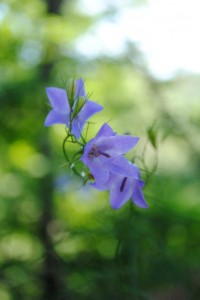

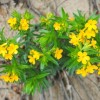
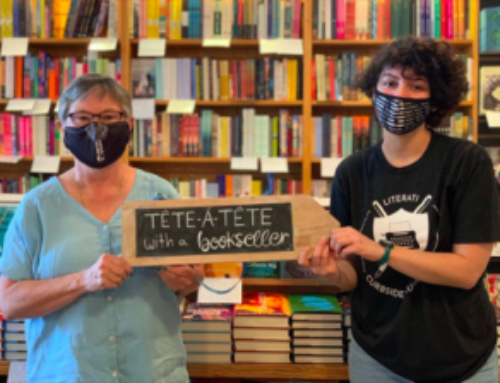

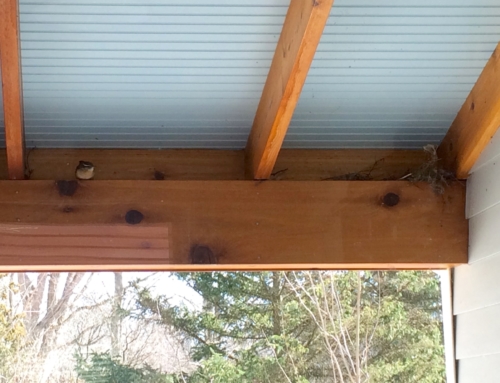

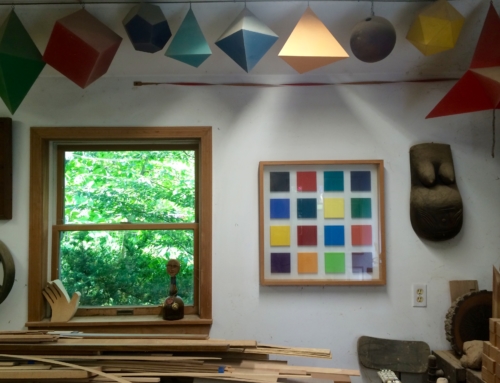



Just two days I was walking with Cathy (my mother-in-law) and we passed some flowers that she thought were harebells. I had never heard the name before.
Do you recall where you saw them? I’d love as many details as you can remember.
Hi Alison, We went for a hike last night and saw these delicate little bells still shining right next to the trail, even after the hard rains we had earlier this week. Another reminder of gifts the woods give.
We hiked up Bliss St. from the boat, over and around to fishtown Rd. with the many sounds of our very busy small town, but far enough away to be in the woods on trails that seem just to be ours.